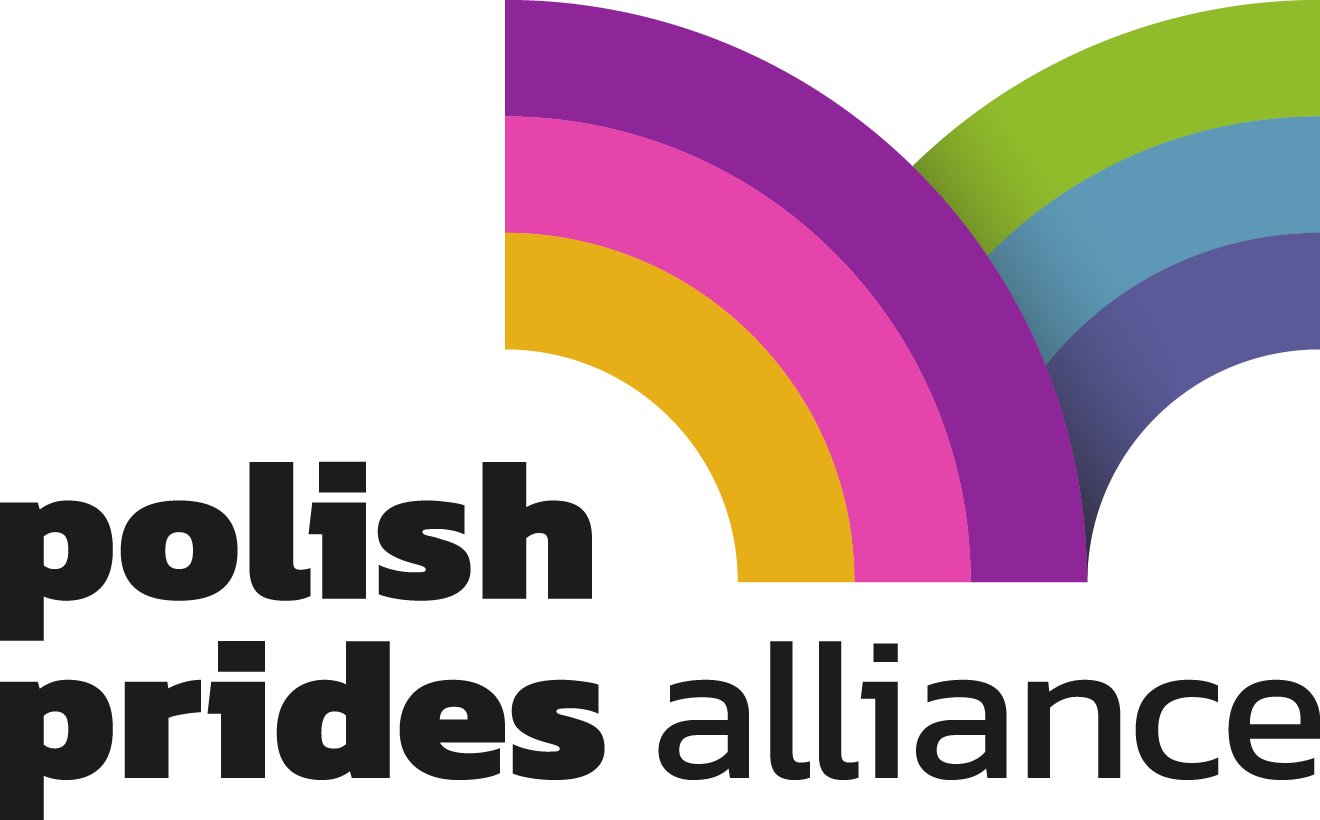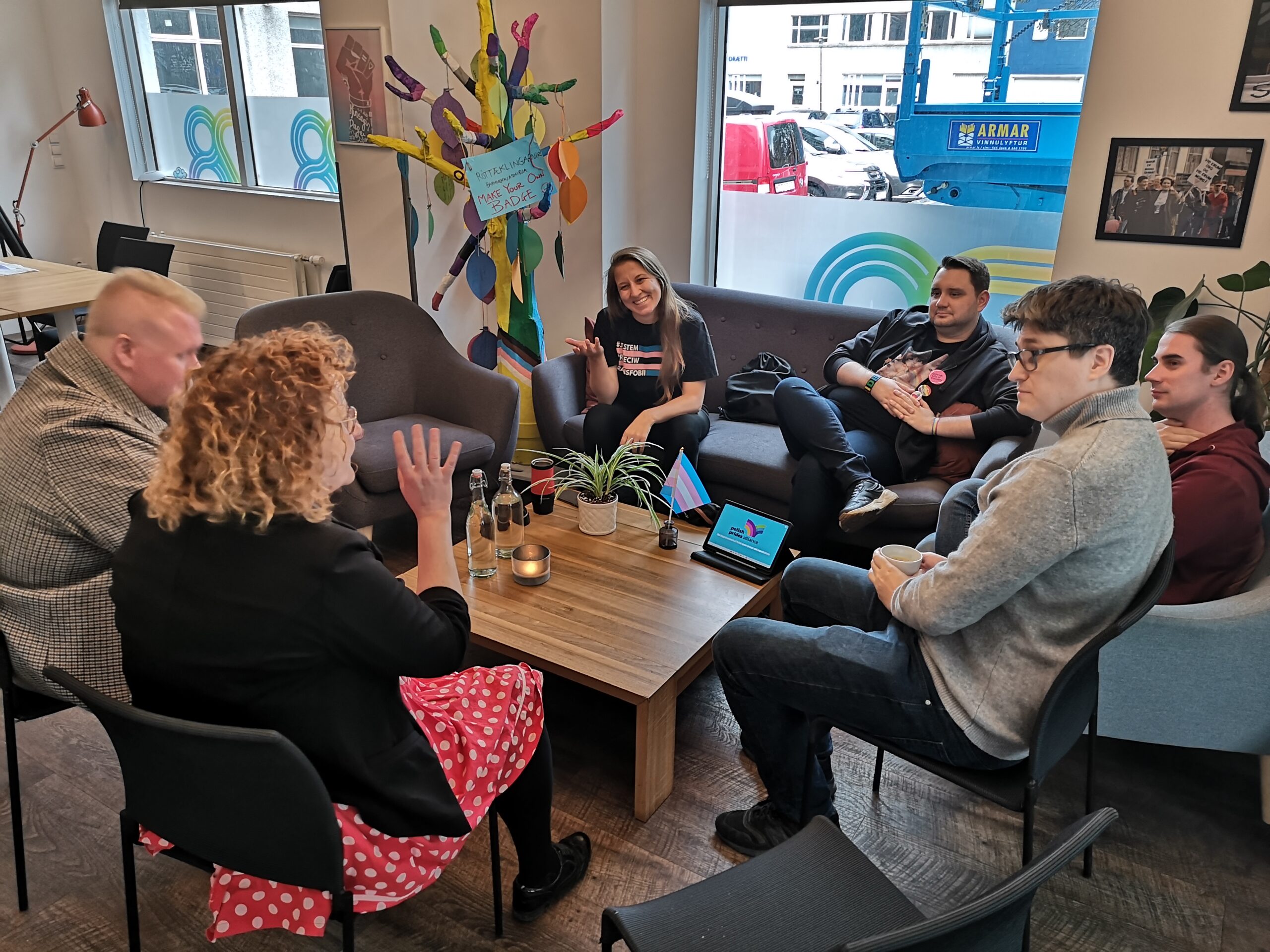Reported by Piotr Jankowski (Tolerado – Gdańsk)
September evening. We take to the air, circle over Gdańsk – one of the most progressive cities in Poland when it comes to local government policy – and start chasing the sunset. This is how the study visit of the Coalition of Marching Cities representative office in Iceland begins.
We are going on a mission with the teasing name „Storks and Puffins”, because it so happens that both of our nations have their own winter-migrating birds, which are almost a symbol of each country. When landing at Keflavik Airport, it’s hard not to notice the intricate, 24-meter sculpture… a rainbow. In addition to the large sculpture, at the entrance (or rather exit) of the terminal, we are greeted by a sidewalk painted in rainbow colors. It turns out that the rainbow will accompany us almost at every step of this visit.
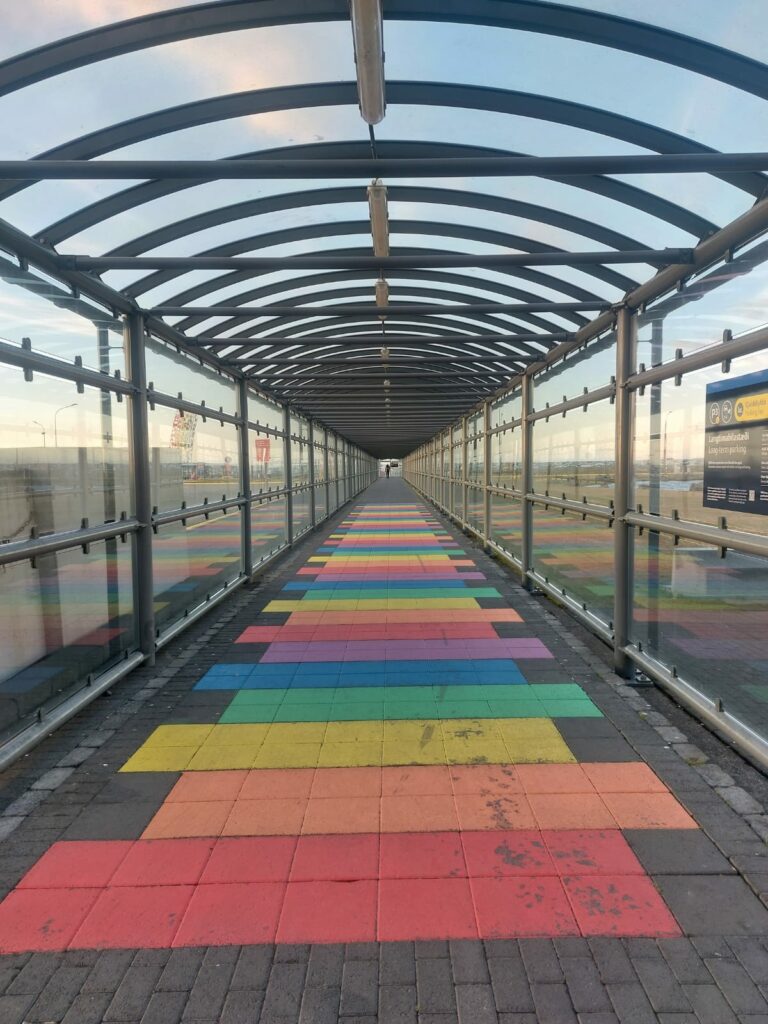
Viking looking at the rainbow
We start in Reykjavik, the capital of Iceland with just over 130,000 inhabitants. It’s hard not to run into one of the main streets of the historic and recreational part of the city, which is simply called… Rainbow Street and, what else may surprise us at this point – it is all painted in rainbow. It is, of course, an undoubted manifesto of support for diversity, but it is hard not to notice that it is primarily an attraction for tourists and a symbol that positively unites both residents and visitors. What may seem almost abstract from our perspective, Rainbow Street leads straight to Hallgrímura Church – one of the most important temples of the Church of Iceland. In front of the cathedral we can see a statue of the Viking Leif Eriksson, proudly staring towards Rainbow Street – according to legend, he was the first European to land in North America (then: Vinland).
In the city center we will also find a slightly inconspicuous building where our visit will officially begin – the headquarters of the Icelandic Samtökin 78 Association – the largest queer organization in Iceland, operating since 1978 (hence the name). We first meet in the intimate headquarters for talks with Reykjavik Pride. We discuss the experiences of Icelandic Pride, about marches in the capital and in the provinces, and about the fact that the smallest march takes place in a settlement with a hundred inhabitants. For our part, we present what we came with, i.e. the story of the Coalition of Marching Cities. We want to get to know each other better, and we also want Icelandic organizations to be future project partners (and not only them) for associations and foundations associated in the Coalition. The presentation, which will ultimately be provided to all Icelandic organizations, is complemented by an extensive part prepared by representatives of some organizations in our network.
I guess we make an impression on our interlocutors because we arrange another meeting and we also get a few hints about the points of our visit.
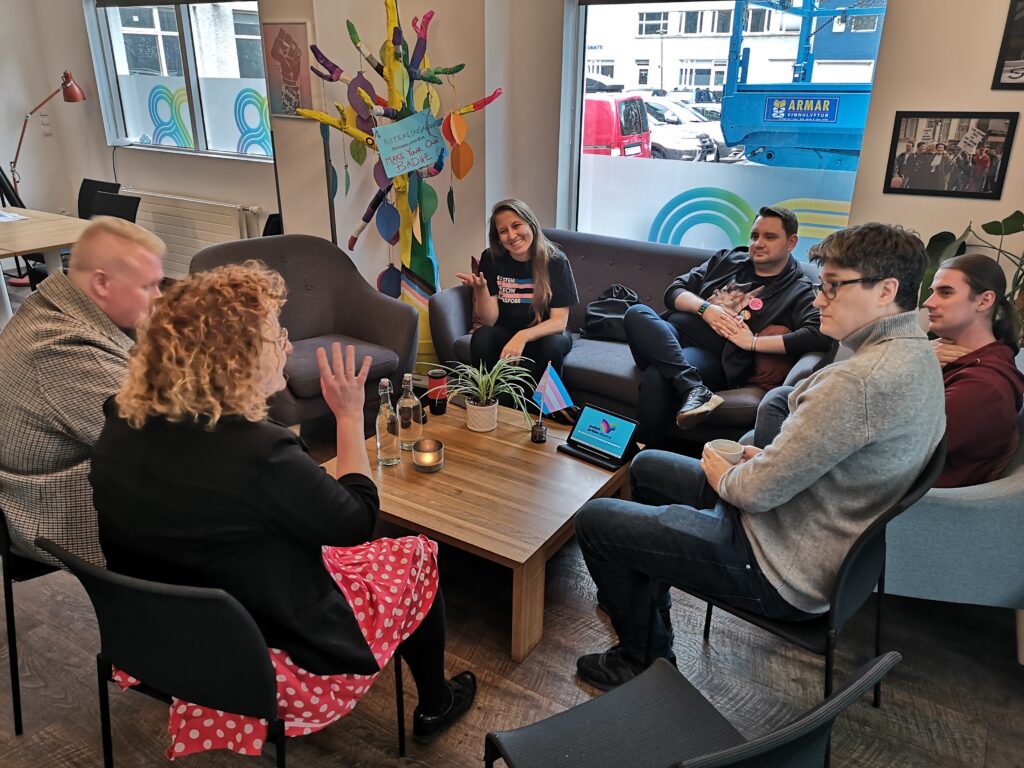
Then we meet with a representative of Samtökin 78. The conversations are dominated, and this is a surprise, by the situation in Iceland itself, i.e. a series of homophobic statements and attacks on the educational activities of our hosts. We listen to accounts of the forms of attacks, terms and comparisons used. There is a bitter expression of understanding on our faces. We know these slogans very well. In Poland, we have been fighting them since 2019 – they ominously dominate pogrom buses, banners and in the statements of some politicians. It’s hard not to get the impression that they are copied from the same source as fundamentalists from all over Europe – Agenda Europe. We warn our interlocutor with concern and encourage her to delve deeper into the topic.
Of course, we are talking about the situation of queers in Poland, but also about Iceland’s path to equality. A country so egalitarian and respectful of the diversity of its citizens seems almost unreal to us.

Are you asking if it was windy? It was windy.
Island of Ice and Fire. And Rainbow.
The next day we set off on the road. We are going to travel around the whole of Iceland, looking for queer Polonia and learning about the activities of other groups. We take the national road number 1, the so-called “Ring Roadem”, which covers the entire island for over 1,500 kilometers. What is extremely important to us, traveling along the Ring Road allows you to get to know Iceland’s national and cultural heritage practically without any detours – everything that is most beautiful about this diverse island can be seen right outside the car window.
On the way, in Selfoss – a town of seven thousand inhabitants, we come to a gas station with rainbow flags flying above it. This sight still surprises us. The next day – not anymore.
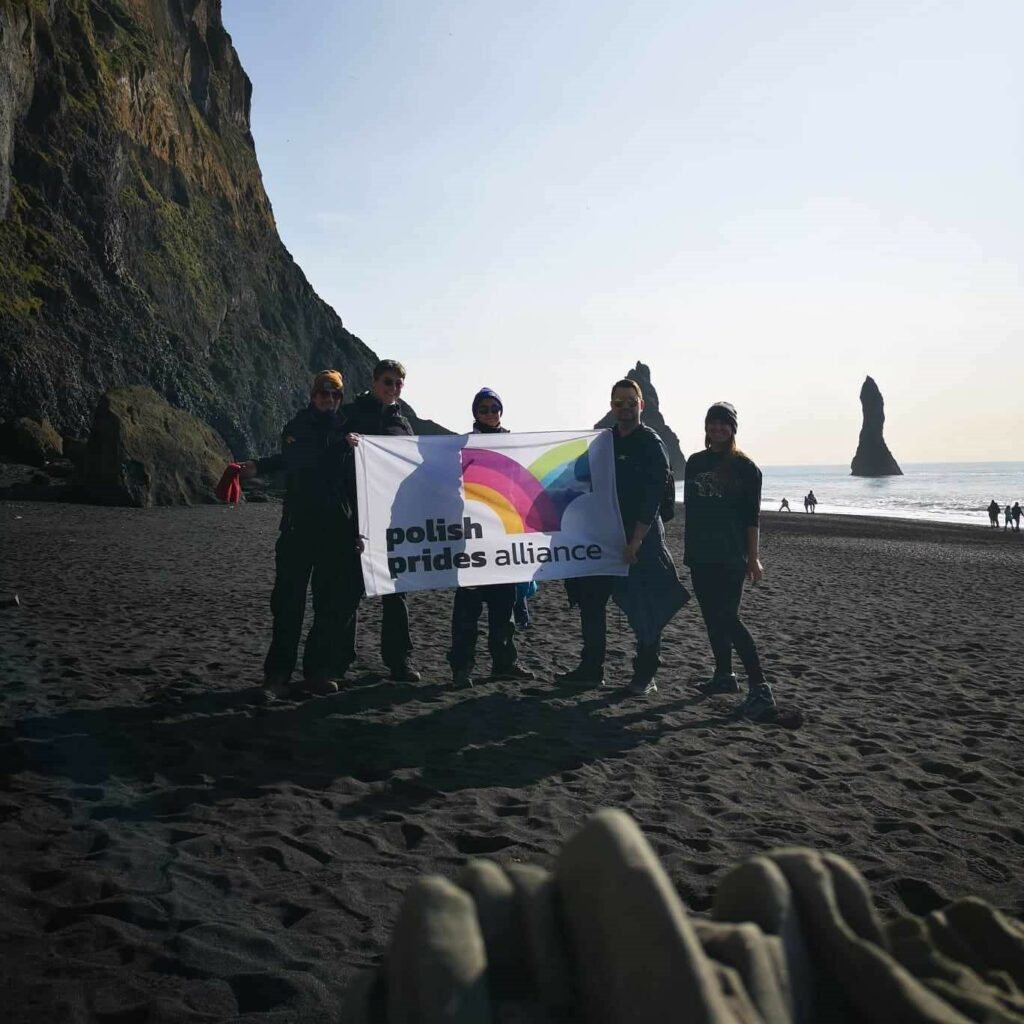
The first destination of our trip – the town of Hofn – is on the other side of the island. Therefore, you will need a stop in the Vik region. Before Vik, we pass the famous Eyjafjallajökull glacier and volcano, the eruption of which in April 2010 caused problems with flights throughout Europe, and in Poland – was almost the source of a diplomatic scandal. In the Vik area we also stop for a moment at the famous black beach Reynisfjara, which, in addition to the black sand and amazing rock formations, including rock pylons which, according to legend, are trolls turned to stone by the sun, is also one of the most dangerous places in Iceland – the waves of the North Atlantic They can be so strong here that they threaten to drag unwary walkers deeper into the sea.
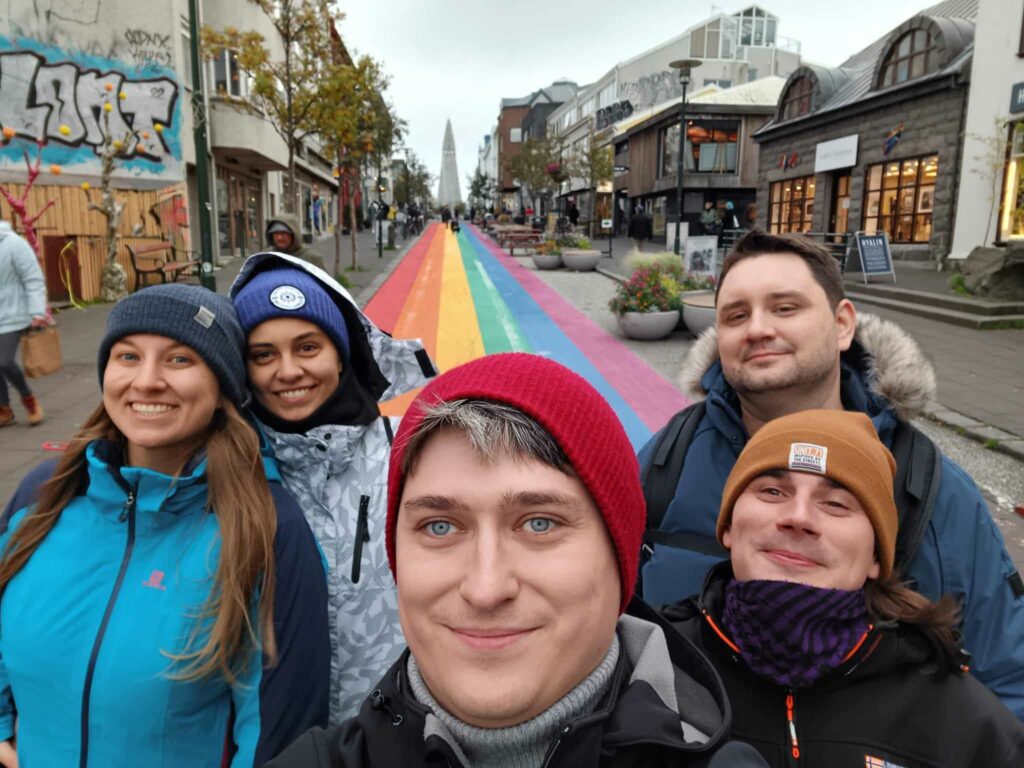
On the way to Hofn, we are accompanied by the largest glacier in Iceland – Vatnajökull. When we finally reach our destination, we manage to meet Polish people and… tourists from America, of which there are plenty in Iceland. We decide not to record this or subsequent meetings. Our goal is to get to know the Polish community and its history, to talk about the Coalition, and not to create commercials, which would not always be comfortable for our interlocutors. In Hofn we spend the night in old port warehouses prepared for this purpose. The rainbow stairs in the strictly industrial part of the port don’t even surprise us anymore…
Your next destination lies in the far north: the city of Husavik, located just below the Arctic Circle. We manage to cover the entire distance in one day and even meet more queer Poles along the way. Husavik, with its microclimate, does not seem to be located on the Arctic Ocean, after all, we are surrounded by trees full of rowan fruit! What’s most interesting, in conversations with Polonia, we learn that this city of 2,000 people celebrates Pride with great pomp, and some boats have… yes, you guessed it right, rainbow flags.
We leave Husavik and head to Akureyri, where, unfortunately, failure awaits us – the dates are different and we fail to meet the local, thriving queer group. We spend the night on the way, so that on the last day on the Ring Road we can see the most important places of Iceland’s historical and natural heritage: Þingvellir National Park – a place sacred to Icelanders, where the first Athingi – parliaments – gathered since the 10th century. Of course, we do not deny ourselves the opportunity to see the nearby geyser field, including the only active geyser – Strokkur. A bit further there is the largest waterfall in Iceland – Gulfoss.
We reach Reykjavik again.

Public Television about the Coalition
We arrange a meeting with a journalist of Polish origin – Margrét Adamsdóttir, who is responsible for Polish topics at the Icelandic public television RÚV. Margrét does not hide her story from us – a few years ago she experienced discrimination and mobbing while working at the Polish embassy in Iceland. The trigger for mobbing was Margrét’s participation in the local Pride March. The case was very loud in both Polish and Icelandic media.
We are recording a half-hour podcast together, in which we talk about our visit and experiences gained during the trip, about the Coalition’s activities and election hopes and fears. We make great contact. We also hope that the podcast will spread among the Polish community throughout Iceland.
You can listen to the podcast here:
https://www.ruv.is/polski/2023-10-04-wyspa-odcinek-49-delegacja-koalicji-miast-maszerujackich-393071?fbclid=IwAR1aTyZZ6yf6GrurHW2Ezk2pUwg4uByi6v31RPAjui0wXAbdrudlgZawoCs
We also give an interview that appears in the main news edition a few days later:
https://www.ruv.is/frettir/innlent/2023-10-09-polskt-hinsegin-folk-er-vongott-um-komandi-kosningar-393153?fbclid=IwAR2-EfUljvKZrESZz2ZpeQLfdc-M7Be59RTRRv3SC4EV4Z1NBOEHhpq8sUU
At the very end of our stay in Reykjavik, we had another, previously unplanned meeting with representatives of the queer Polish community.
We know that the remaining Coalition stickers and armbands are in good hands.
Meanwhile, we are heading to Keflavik, to the airport. Leif Eriksson, a Viking staring at a rainbow, in front of whom stands a monumental rainbow sculpture.
We take memories and experiences from a place that seems out of this world – both in terms of geological and social processes.
